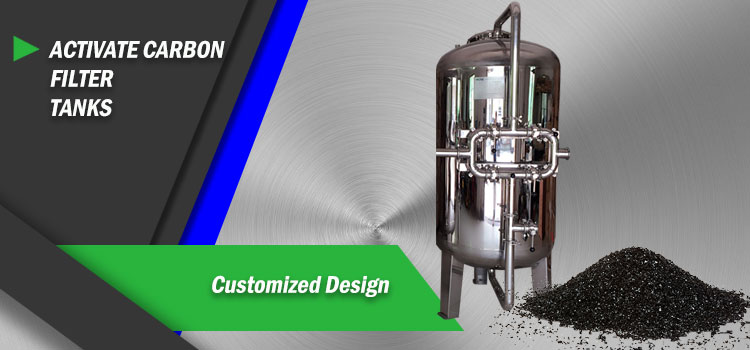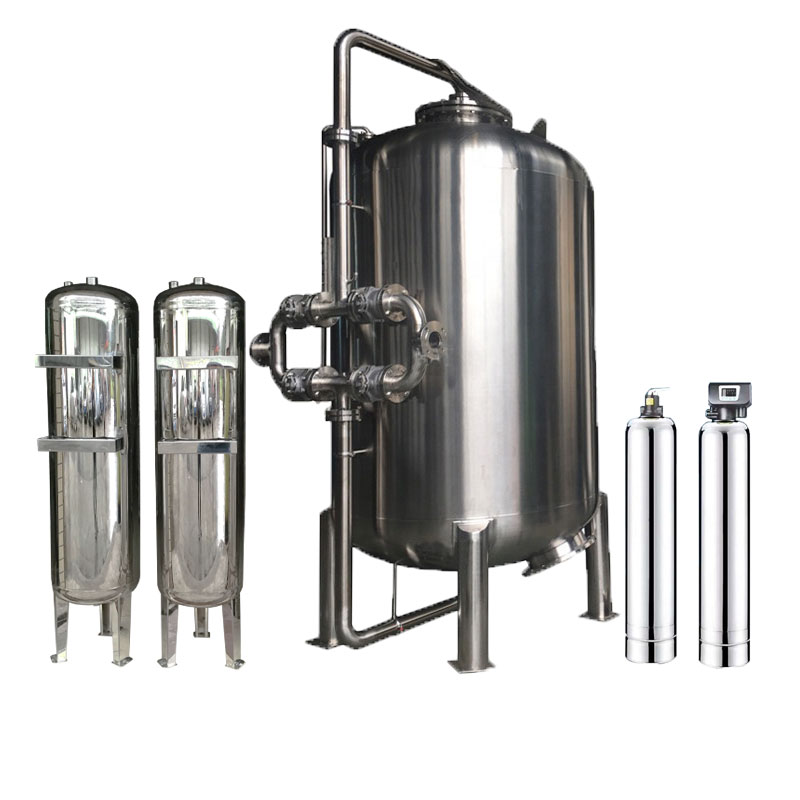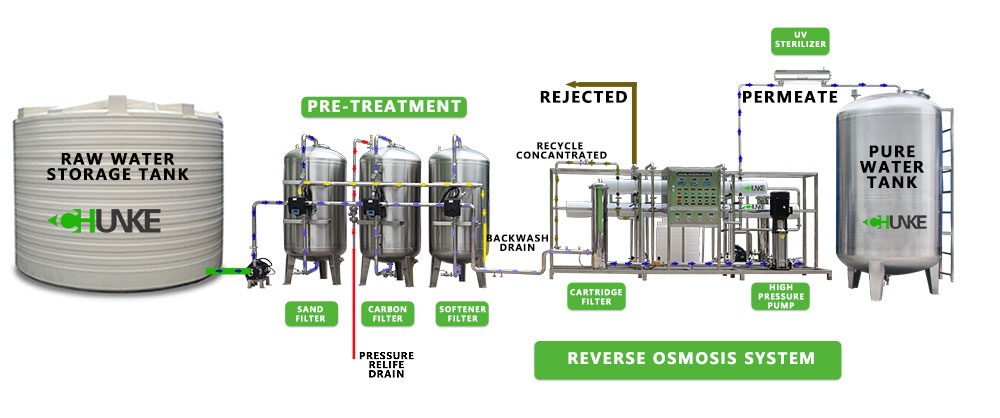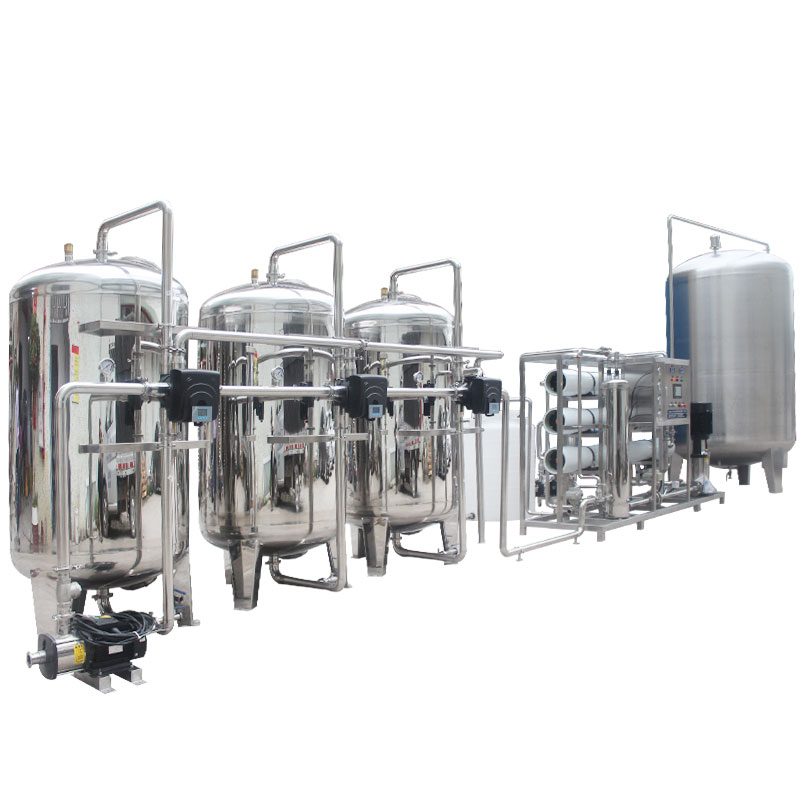Can whole-house water filters remove bacteria?
Water quality safety issues are increasingly attracting public attention. As a whole-house water treatment device, whole-house water filters have been favored by more and more families. This device claims to be able to purify all household water, including drinking water, bathing water, and household water. So, can whole-house water filters really remove bacteria?
This article will explore the working principle, actual effect, advantages and disadvantages of whole-house water filters in depth, and provide readers with scientific and detailed information.

What is a whole-house water filter? How does it work?
Whole-house water filters usually consist of multiple filter units, each of which treats different types of pollutants. Common filter units include sedimentation filtration, activated carbon filtration, ultraviolet disinfection, and reverse osmosis filtration. The units work together to efficiently remove various pollutants in the water.
1. Sedimentation filtration:
Sedimentation filters are mainly used to remove large particle impurities in water, such as silt, rust, and suspended matter. This filter usually uses PP cotton filter elements or stainless steel meshes to filter out large particle matter by physical interception to ensure the normal operation of subsequent filter units.
2. Activated carbon filtration:
Activated carbon filters use the adsorption capacity of activated carbon to remove odors, residual chlorine, organic matter and some heavy metals in water. Activated carbon has a developed pore structure and can adsorb tiny particles and soluble substances in water, improving the taste and safety of water quality.
3. UV disinfection:
UV sterilizers use the strong bactericidal ability of UV-C light (wavelength of 200-280 nanometers) to destroy the DNA or RNA structure of bacteria, viruses and other microorganisms in water, making them lose their reproductive ability. UV sterilizers are often used as the last line of defense for whole-house water filtration systems to ensure the sanitation and safety of water quality.
4. Reverse osmosis filtration:
Reverse osmosis filters almost completely remove dissolved solids, organic matter, bacteria and viruses in water through a semipermeable membrane. This filtration method can provide extremely high purity water quality and is widely used in the preparation of household drinking water and industrial water.

What is the actual effect of whole-house water filters?
1. Bacteria removal effect:
Whole-house water filters perform well in removing bacteria, especially systems that combine UV disinfection and reverse osmosis filtration. Ultraviolet disinfection can effectively kill bacteria and viruses in water. Studies have shown that the sterilization rate of ultraviolet disinfection can reach more than 99%. Reverse osmosis filters completely filter out bacteria and viruses through physical barriers. Their pore size is usually around 0.0001 microns, which is enough to block most microorganisms.
2. Comprehensive purification ability:
In addition to removing bacteria, whole-house water filters can also effectively remove other pollutants, such as silt, rust, residual chlorine, heavy metals and organic matter. Through multi-stage filtration, whole-house water filters can provide high-quality domestic water and ensure the health and safety of household water.
3. User case analysis:
Take a family in a certain city as an example. The family installed a whole-house water filtration system, which includes four units: sediment filtration, activated carbon filtration, ultraviolet disinfection and reverse osmosis filtration. After installation, family members found that the taste of drinking water was significantly improved, the bathing water no longer had an odor, and the water quality test results showed that the bacterial content in the water was significantly reduced. This case shows that whole-house water filters can indeed effectively remove bacteria and other pollutants in actual applications.

What are the advantages and disadvantages of whole-house water filters?
1. Advantages of whole-house water filters:
● Efficient purification: Whole-house water filters can effectively remove bacteria, viruses, sediment, residual chlorine, heavy metals, organic matter and other pollutants in water, providing safe and pure domestic water.
● Whole-house coverage: Whole-house water filters are installed on the water pipes entering the house, which can filter all water in the house and ensure the safety of water quality in all aspects of drinking, bathing and housework for family members.
● Environmental protection and health: Whole-house water filters use physical and adsorption filtration technology, do not use chemical additives, will not cause secondary pollution, and are friendly to the environment and health.
2. Disadvantages of whole-house water filters:
● High installation cost: The whole-house water filter system is relatively complex and has a high installation cost, especially requiring professional personnel for installation and maintenance.
● Regular maintenance: Components such as filter elements and ultraviolet lamps need to be replaced and maintained regularly, and the maintenance cost is high.
● Occupancy space: Whole-house water filters are usually large in size and occupy a certain amount of installation space, which may not be convenient for small households.

What are the precautions for using whole-house water filters?
1. Choose the right filter:
When choosing a whole-house water filter, you should choose the right filter unit and configuration according to the household water quality and water demand. For example, if the water quality is poor and contains a lot of suspended solids and organic matter, you can choose a system with sedimentation filtration and activated carbon filtration; if the water quality requirements are high, you can choose a system with reverse osmosis filtration.
2. Regularly replace the filter element:
The filter element and UV lamp of the whole-house water filter need to be replaced regularly to ensure the filtration effect. The replacement cycle of the filter element is usually 3-6 months, and the service life of the UV lamp is about one year. The specific replacement cycle can be adjusted according to the usage and manufacturer's recommendations.
3. Regularly test the water quality:
After installing the whole-house water filter, it is recommended to test the water quality regularly to ensure the filtration effect. If the water quality is found to be deteriorating or there is an odor, the filter element should be checked and replaced in time, and if necessary, professionals can be asked to perform maintenance and repair.

Conclusion on the whole-house water filter
As an efficient water treatment equipment, the whole-house water filter can effectively remove bacteria and various pollutants in the water and provide safe and pure domestic water. Although its installation and maintenance costs are high, it is effective in improving water quality and protecting family health, and is worthy of promotion and application.




